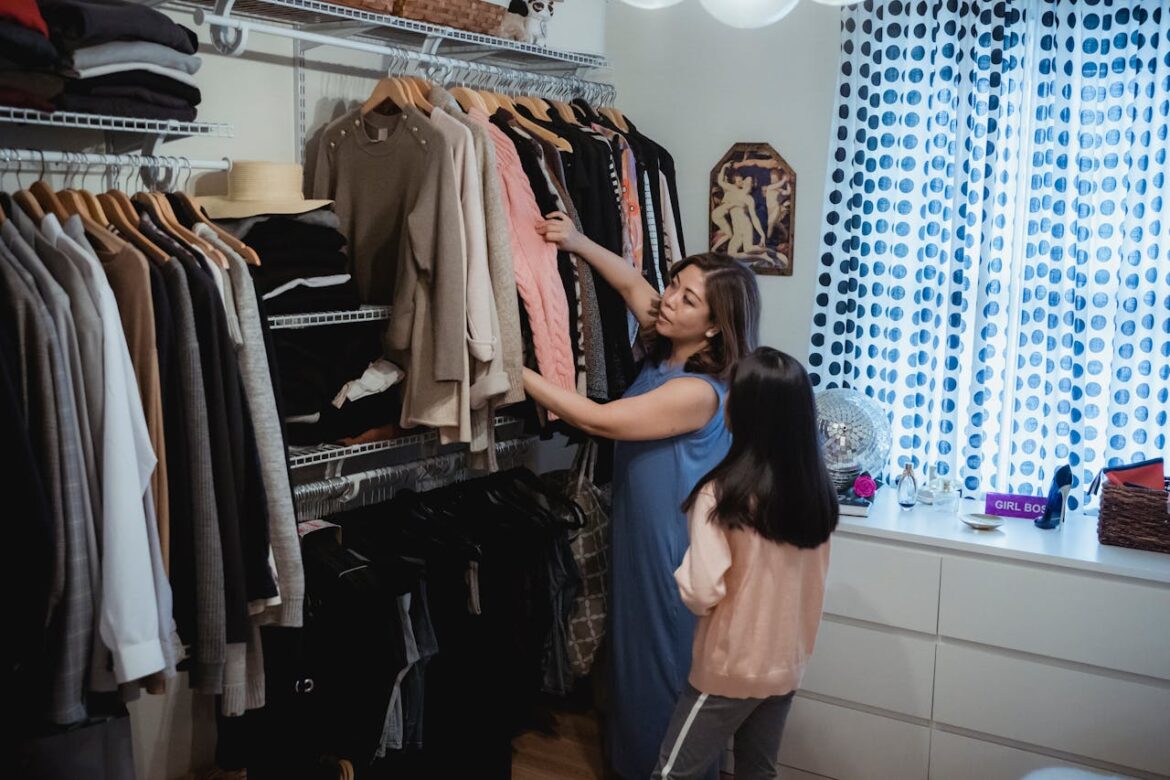It seems to be a universal experience for parents to open their child’s closet, only to find a pile of clothes, shoes, toys, and other random items spilling out. Despite your best intentions to get them set up with a closet that works for them, they grow quickly, and their storage needs change just as fast! Not to mention, most kids are more focused on school and playing with their friends than on maintaining an orderly closet.
Without the right tools, closets can become messy and stressful spaces that never seem to stay organized.
The good news is that the solution doesn’t always require a complete closet remodel. As we’ll show you today, smart storage accessories can completely change the way your child’s closet works.
Even better, they teach kids independence and responsibility by making it easier for them to put things back where they belong.
Improving Kids’ Closets Without a Total Overhaul
This guide takes a closer look at the best accessories for children’s closets and how they can grow with your child. Each accessory not only adds order but also helps your child take pride in their space.
Bins and Baskets
One of the simplest ways to keep a child’s closet under control is with bins and baskets. These containers collect small items that would otherwise get lost on shelves or discarded on the floor.
Why they work: Kids’ wardrobes aren’t just about shirts and pants. There are socks, hats, mittens, swimwear, toys, and seasonal items. Without bins, these smaller pieces scatter and create clutter. Bins provide designated spots, making it easier for kids to grab what they need and put it back afterward.
Practical options:
- Fabric cubes are lightweight and easy for toddlers to pull in and out. They come in fun patterns and colors that add personality to the closet.
- Clear plastic bins are perfect for older kids because they can see exactly what’s inside without having to rummage.
- Wicker or woven baskets add texture and can match the décor of the bedroom.
Tip for parents: Assign each bin a specific purpose. One for socks, one for hats, one for pajamas, and so on. The clearer the system, the more likely kids will follow it.
Shoe Storage
Shoes are among the most challenging items to keep organized in a child’s closet. Without structure, they end up scattered across the floor or piled into a corner. That means rushed mornings often involve hunting for missing sneakers.
Why it matters: A dedicated shoe storage solution keeps pairs together, saving time. It also protects shoes from being crushed or damaged.
Options to consider:
- Low cubbies: Great for toddlers and school-age kids, these allow them to easily slip their shoes in and out.
- Tiered racks: These work well for families with multiple children, providing each child with their own section.
- Over-the-door organizers are perfect for closets with limited floor space. Clear pockets make it easy for kids to find the right pair quickly.
Growing with kids: As children get older, their shoe collections expand to include cleats, dress shoes, and boots. Adjustable racks or modular cubbies can adapt to these changes, making them a smart long-term investment.
Hooks and Hangers
Sometimes, the simplest accessory can make the biggest difference. Hooks and hangers provide kids with an easy way to manage their clothing and gear, without the need for adult assistance.
- Hooks: Install a few at your child’s height for backpacks, coats, and hats. This keeps bulky items off the floor and makes them easy to grab on the way out the door. As your child grows, you can add higher hooks to suit their new height.
- Hangers: Colorful, child-sized hangers make it easier for younger kids to hang up their clothes. As they get older, transition to sturdier wooden or velvet hangers to support heavier items like jackets or uniforms.
- Why it helps: Hooks and hangers encourage independence. Even toddlers can learn to hang up their jackets or place a backpack on a hook, turning cleanup into a simple, achievable task.
Labels and Visual Cues
Labels take the guesswork out of organizing. When everything is clearly marked, kids know exactly where items belong.
- For younger children: Picture labels work wonders. A small image of socks taped to a bin shows toddlers where to toss their laundry. This eliminates confusion and makes cleanup part of their routine.
- For older kids and teens: Word labels are enough. Chalkboard or whiteboard tags offer flexibility, letting you change labels as your child’s storage needs shift.
- The benefit: Labels act as silent reminders. Parents don’t have to constantly remind their kids where things go, and they gain confidence in managing their own belongings.
Cubbies
Cubbies are like the all-purpose solution for kids’ closets. They divide a large space into smaller compartments, making it easier to store and find items.
Great uses for cubbies:
- Shoes and boots
- Folded clothes like sweaters or jeans
- Bins and baskets that slide right in
- Toys, stuffed animals, or books
Flexibility: Cubbies can be stacked vertically to make the most of the space, or arranged horizontally for younger kids who need lower access. Some parents even repurpose cubbies as homework stations or toy displays once kids outgrow them in the closet.
Hampers
A dedicated hamper inside the closet keeps dirty clothes contained and prevents them from spreading across the bedroom.
- For toddlers: Low, open hampers remove any barriers to putting dirty clothes out of sight. This small habit helps them learn responsibility.
For older kids: Divided hampers for lights and darks teach more advanced laundry skills. - Why it works: With the hamper in the closet, dirty clothes don’t pile up elsewhere.
Specialty Accessories for Different Ages
Every stage of childhood comes with its own unique storage needs. Accessories can adapt to meet them:
- Toddlers: Step stools, low rods, and open bins are all good options for making closets safe and accessible.
- School-age kids: Shoe racks, cubbies, and hooks for backpacks streamline daily routines and make it easier to find what they need.
- Tweens and teens: Once your kids are in this range, they might want more privacy and organization. Enclosed drawers, private storage, and adjustable shelves are good options for this time period.
Accessories don’t have to stay static. Choosing flexible, modular pieces means you can shift the layout without replacing the entire system.
Teaching Kids Organization Through Accessories
The best part about smart closet accessories is that they help kids develop organizational habits that last a lifetime. When everything has a clear place, children learn how to manage their belongings without constant reminders.
- Accessibility: Low bins and hooks give toddlers a sense of ownership.
- Simplicity: Clear labels prevent confusion and create repeatable routines. As we mentioned above, if they’re too young to read, you can use labels that are picture-based rather than text-based to show what’s inside.
- Responsibility: Hampers and shoe racks show kids how to care for their belongings.
Over time, these small lessons add up. A closet filled with thoughtful accessories doesn’t just keep things tidy: it teaches kids independence and life skills.
Style Meets Function
While function is the priority, style shouldn’t be ignored. Accessories are an opportunity to inject color and personality into a closet.
- Bright fabric bins: You might coordinate with a child’s bedding or wall color, or pick something that really stands out.
- Patterned baskets: We love these for adding texture and making storage feel intentional.
- Custom hangers: Fun shapes or colors add a splash of fun to the space.
These touches give kids a closet that feels like their own space, encouraging them to take pride in keeping it organized.
Linking Accessories to a Bigger Closet Design
Smart accessories are powerful on their own, but they work even better as part of a custom closet system. When combined with adjustable shelving, modular drawers, and adaptable rods, accessories create a closet that grows with your child year after year.
Get Started on Your Child’s Closet
So, there you have it! You can totally revamp your child’s closet without having to start from scratch. It’s not a set-it-and-forget-it kind of thing, but with the right tools in place and some guidance from you, your child will be well on their way to keeping this space neat and tidy…or at least tidier than before!
If you’re ready to bring more organization to your child’s room, Coastal Closets and Showers can help. Their custom closet solutions combine adaptable systems with stylish accessories so your child’s closet grows with them.
Contact them today or visit their Stuart, FL, showroom to start designing a space that supports your child at every stage.


